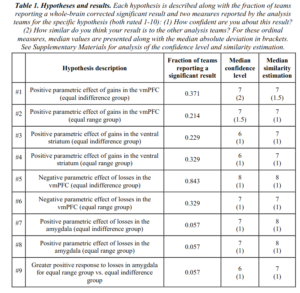http://infoproc.blogspot.dk/2012/07/whole-genome-sequence-from-10-to-20.html
“This new Nature paper describes a genotyping technique that can be performed using only a small number of human cells. One implication is that we are close to non-destructive sequencing of human gametes and zygotes. For example, parents participating in IVF can potentially genotype fertilized eggs before deciding which to implant. “
also
http://infoproc.blogspot.dk/2010/10/maxwells-demon-and-genetic-engineering.html
“Ronald Fisher on positive alleles for intelligence, in Mendelism and Biometry (1911).
Suppose we knew, for example, 20 pairs of mental characters [loci in the genome]. These would combine in over a million pure mental types; each of these would naturally occur rather less frequently than once in a billion; or in a country like England about once in 20,000 generations [assuming the positive variants are somewhat rare]; it will give some idea as to the excellence of the best of these types when we consider that the Englishmen from Shakespeare to Darwin have occurred within 10 generations; the thought of a race of men combining the illustrious qualities of these giants, and breeding true to them, is almost too overwhelming, but such a race will inevitably arise in whatever country first sees the inheritance of mental characters elucidated. “
Lastly, compare with Richard Lynn’s suggestion in his book Eugenics: A reassessment (nicely provided by Lynn himself!):
“6. EMBRYO SELECTION
Embryo selection consists of growing a number of embryos in vitro, testing
them for their genetic characteristics, and selecting for implantation those
with genetic characteristics regarded as desirable, while at the same time
discarding those with genetic characteristics regarded as undesirable. This
procedure is also known as embryo biopsy, which entails growing several blas-
tocysts (embryos grown in vitro to eight cells), removing one of the eight
cells, and testing it for genetic and chromosomal defects. Verlinksy, Pergament,
and Strom (1990) reported the use of this procedure to screen out embryos
with genes for Duchenne’s muscular dystrophy and Down’s syndrome, so an
embryo free of these disorders could be implanted in the mother. At about
the same time, another use of this technique was reported by Handyside and
his colleagues at London University. They used IVF (in vitro fertilization) for
two couples in which the female was a carrier for an X-linked recessive dis-
ease, which is expressed only in males. To avoid the potential birth of a boy
with the X-linked disorder, the physicians tested for the sex of the embryos
and implanted only females. This technique allows couples to choose the sex
of their babies, whether this is to avoid having babies likely to inherit serious
disorders, or simply because they prefer one sex rather than the other.
In the 1990s there was rapid progress in preimplantation diagnosis and the
screening out of embryos with genetic diseases and disorders. By 1995 preim-
plantation diagnosis of embryos for the presence of genetic diseases and dis-
orders was being carried out in 16 centers in various countries. Initially, this
work was done to screen for genetic diseases affecting babies at birth or shortly
after birth. By the late 1990s, this was extended to screen for the presence of
cancer genes that would cause tumors likely to appear only in adulthood. The
first use of this method for the diagnosis of cancer genes was carried out in
Britain in 1996 on the embryo of a woman with familial adenomatous poly-
posis (FAP), a form of bowel cancer caused by a dominant gene. By the end
of the twentieth century, it had become possible to screen embryos for several
thousands of genetic diseases and disorders.
Preimplantation diagnosis and embryo selection is preferable to prenatal
diagnosis and abortion of defective fetuses as a means of securing a healthy
baby. It avoids the stress of abortion, and it greatly increases the probability
of having a child free of genetic diseases. Women who use prenatal diagnosis
and abortion of impaired fetuses may become pregnant again and, in the case
of single-gene diseases, are at significant risk of having another fetus with the
disease and having to undergo a second pregnancy termination. These stresses
can be avoided by the use of preimplantation diagnosis and embryo selection.
Although the procedures have not been used extensively by the beginning of
the twenty-first century, they are a significant eugenic advance. “ (p. 252)
